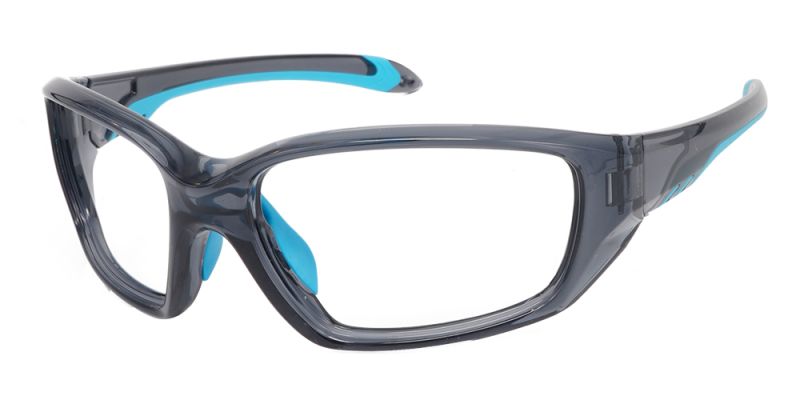Understanding Single Vision Lenses: What You Need to Know


Single-vision lenses are a type of corrective lens used to treat nearsightedness, farsightedness, and astigmatism. They are designed to provide clear vision at a single distance and are the simplest and most common type of lens used in eyeglasses. In this blog, we will discuss the different types of single-vision lenses, the materials used in their construction, how to choose the right lenses, their advantages and limitations, and how to properly care for them.
Types of Single-Vision Lenses
There are different types of single-vision lenses, each with its unique features and benefits. Here are the most common types:
-
Basic Single-Vision Lenses: These are the most affordable type of single-vision lenses. They have a constant curvature over the entire surface and are suitable for low to moderate prescriptions.
-
Aspheric Single Vision Lenses: These lenses have a more complex surface curvature, which allows them to be thinner and flatter than basic lenses. They also reduce distortion and provide better peripheral vision.
-
High-Index Single Vision Lenses: These lenses are thinner and lighter than basic lenses, making them more comfortable to wear. They are suitable for people with stronger prescriptions, as they can provide better visual acuity with less material.
-
Photochromic Single Vision Lenses: These lenses darken in bright light and lighten in dim light, providing protection from UV rays and reducing glare. They are suitable for people who spend a lot of time outdoors or in environments with varying light conditions.
-
Polarized Single Vision Lenses: These lenses reduce glare and enhance contrast, making them ideal for people who spend a lot of time driving or participating in water sports.
Materials Used in Single-Vision Lenses
Single-vision lenses can be made from different materials, each with its unique properties and suitability for different lifestyles. Here are the most common materials used:
-
Glass Lenses: These lenses are highly scratch-resistant and provide clear vision. However, they are heavy and can break easily, making them less popular than other materials.
-
Plastic Lenses: These lenses are lightweight, impact-resistant, and less expensive than glass lenses. They are suitable for low to moderate prescriptions but can scratch easily.
-
Polycarbonate Lenses: These lenses are highly impact-resistant, making them ideal for sports and other activities where eye protection is needed. They are also lightweight and suitable for children's glasses.
-
Trivex Lenses: These lenses are similar to polycarbonate lenses but provide better optical quality and clarity. They are also highly impact-resistant and lightweight, making them ideal for active lifestyles.
Advantages of Single Vision Lenses
Single-vision lenses have several advantages, including:
-
Clear vision at one distance: Single vision lenses provide clear vision at a single distance, making them suitable for most daily activities.
-
Lower cost compared to other lens types: Basic single-vision lenses are the most affordable type of corrective lenses, making them accessible to a wide range of people.
-
Lightweight and comfortable: Single-vision lenses are generally lightweight and comfortable to wear, making them suitable for all-day wear. They do not have additional components like bifocal or progressive lenses, which can add weight and bulk to the lens.
-
Wide range of frame options: Single vision lenses can be easily fitted into most frame styles, providing a wide range of options for personal style and preferences.
-
Suitable for various vision problems: Single-vision lenses are versatile and can correct various vision problems such as nearsightedness, farsightedness, and astigmatism.
-
Variety of materials: Single-vision lenses are available in different materials, such as plastic, polycarbonate, and high-index materials. Each material has its unique features and benefits, such as impact resistance, thinness, and scratch resistance.
-
Easy to adjust: Single-vision lenses are easy to adjust, making them ideal for people who require frequent prescription changes.
In addition, single-vision lenses can be used for specific purposes, such as reading or computer use. For example, single-vision lenses with a near prescription can be used for reading, while those with intermediate prescriptions are suitable for computer use.
Limitations of Single-Vision Lenses
Despite their advantages, single-vision lenses also have some limitations, including:
-
Limited range of vision: Single-vision lenses provide clear vision at only one distance, making it difficult to focus on objects at different distances.
-
Not suitable for bifocal or progressive lenses: Single-vision lenses cannot provide the multiple prescriptions needed for bifocal or progressive lenses, which are designed to provide clear vision at multiple distances.
-
Limited customization: Single-vision lenses cannot be customized to meet specific vision needs, such as computer use or reading.
Conclusion
Single-vision lenses are a popular and affordable type of corrective lenses used to treat nearsightedness, farsightedness, and astigmatism. There are different types and materials to choose from, each with its unique features and benefits. By considering factors such as prescription strength, lifestyle, and occupation, you can choose the right lenses for your needs. With proper care and maintenance, single-vision lenses can provide clear vision for many years.
For the best single-vision glasses, get them from CA Glasses. They provide a wide variety of high-quality safety glasses in various materials and lenses.











